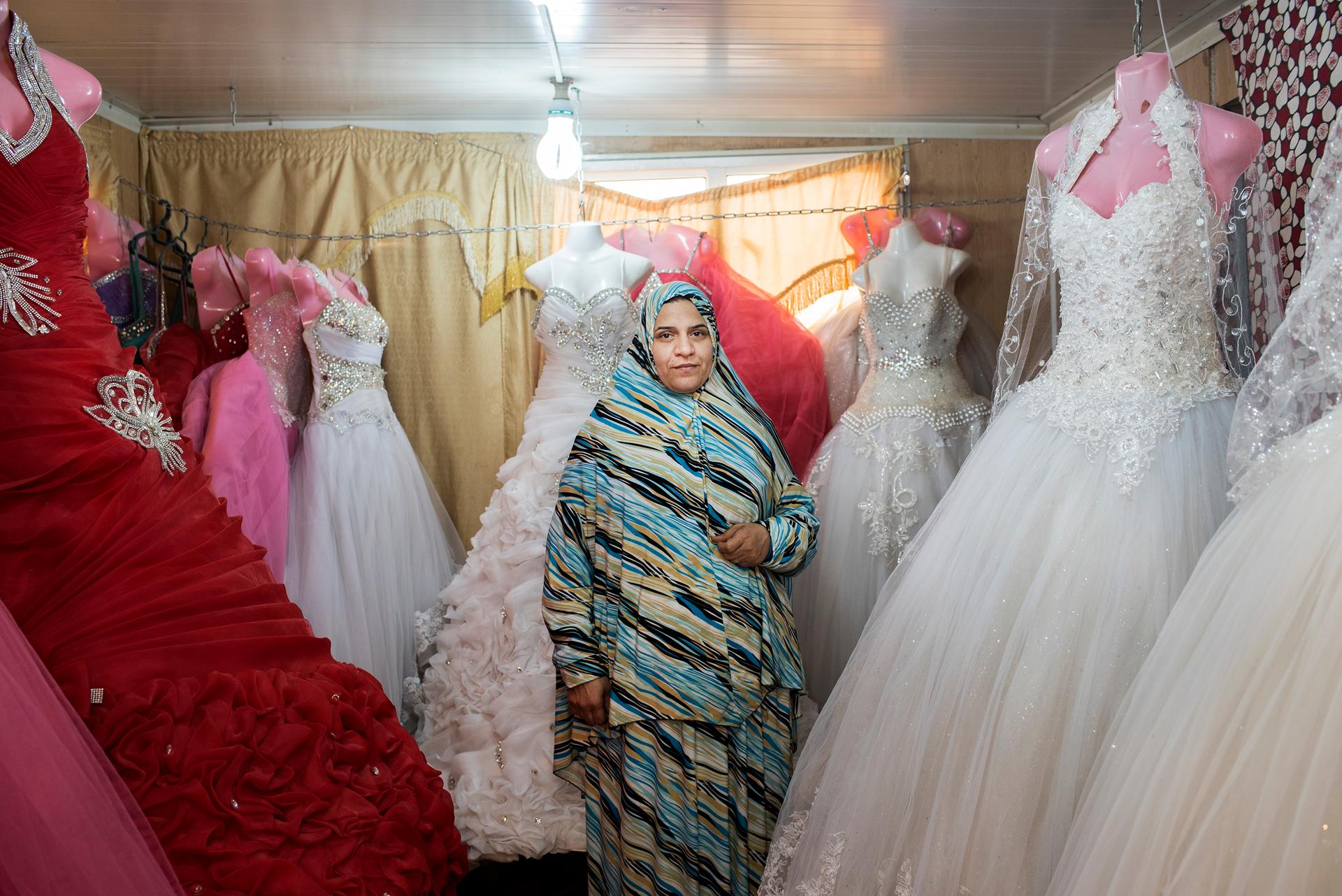This refugee camp in Jordan has turned into a frontier town for Syrians escaping war
Um Mohammed, a Syrian refugee hailing from the southern Daraa region, stands in her wedding dress shop in Jordan's Zaatari camp. Expecting another child, Um Mohammed said she opened the shop a year and a half ago to help generate extra income for her growing family.
Thousands of refugees, a sea of tents, and a big, open desert. Five years ago, this was Zaatari.
Today, the tents are gone from this refugee camp in Jordan. But the refugees aren’t. In fact, they're more settled than ever. About 80,000 people live here, now in rows and rows of trailers. There are nine schools. A wedding boutique. You can buy decent avocados from produce stalls.
The settlement is so big, you can see it from space.
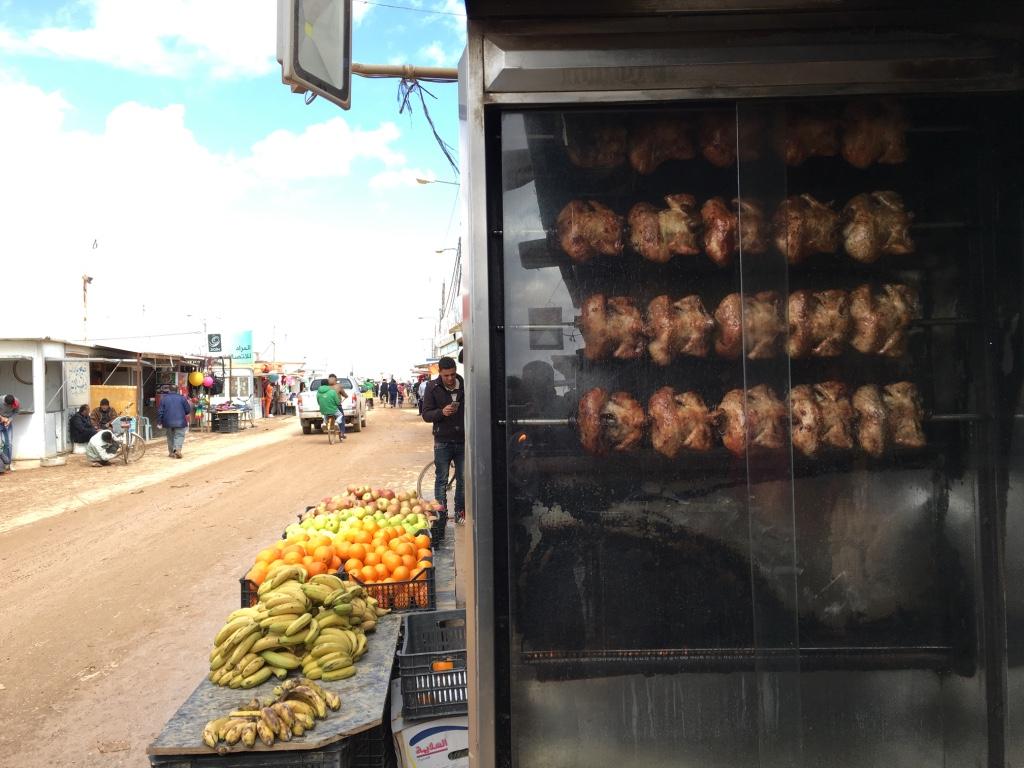
After five years of life in limbo, these Syrians have started fresh. The refugees are not sitting on their hands. They want a livelihood. They want to be independent and to live like they used to in Syria: with dignity.
Twenty-seven-year-old Abdel Naser Hamada is one of them. He’s wearing a red Nike shirt and close-cropped beard. He says he left Syria four years ago.
“I studied engineering at Zarqa University in Syria,” he says. But he never got to finish his studies. Instead, he had to get himself, his wife and his 2-year-old daughter across the border to Jordan. They made it to Zaatari.
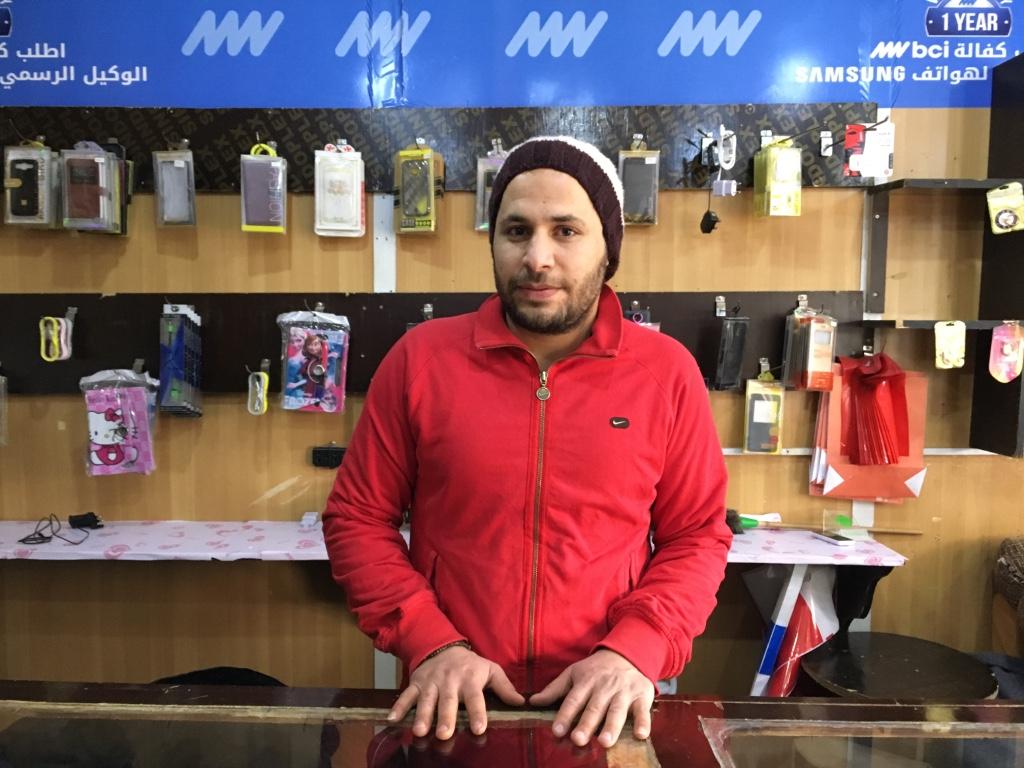
A year went by. Then another, and another. Life in the camp started to feel permanent. The best way to put his engineering skills to use, Hamada thought, was to open a store.
“I have phones and speakers, headphones and laptop and hard disk and flash. Everything,” he says, standing behind the counter in his electronics store.
What do people in a refugee camp need hard disks and flash drives for? “Students,” Hamada responds.
And as for cellphones, they’re cherished here.
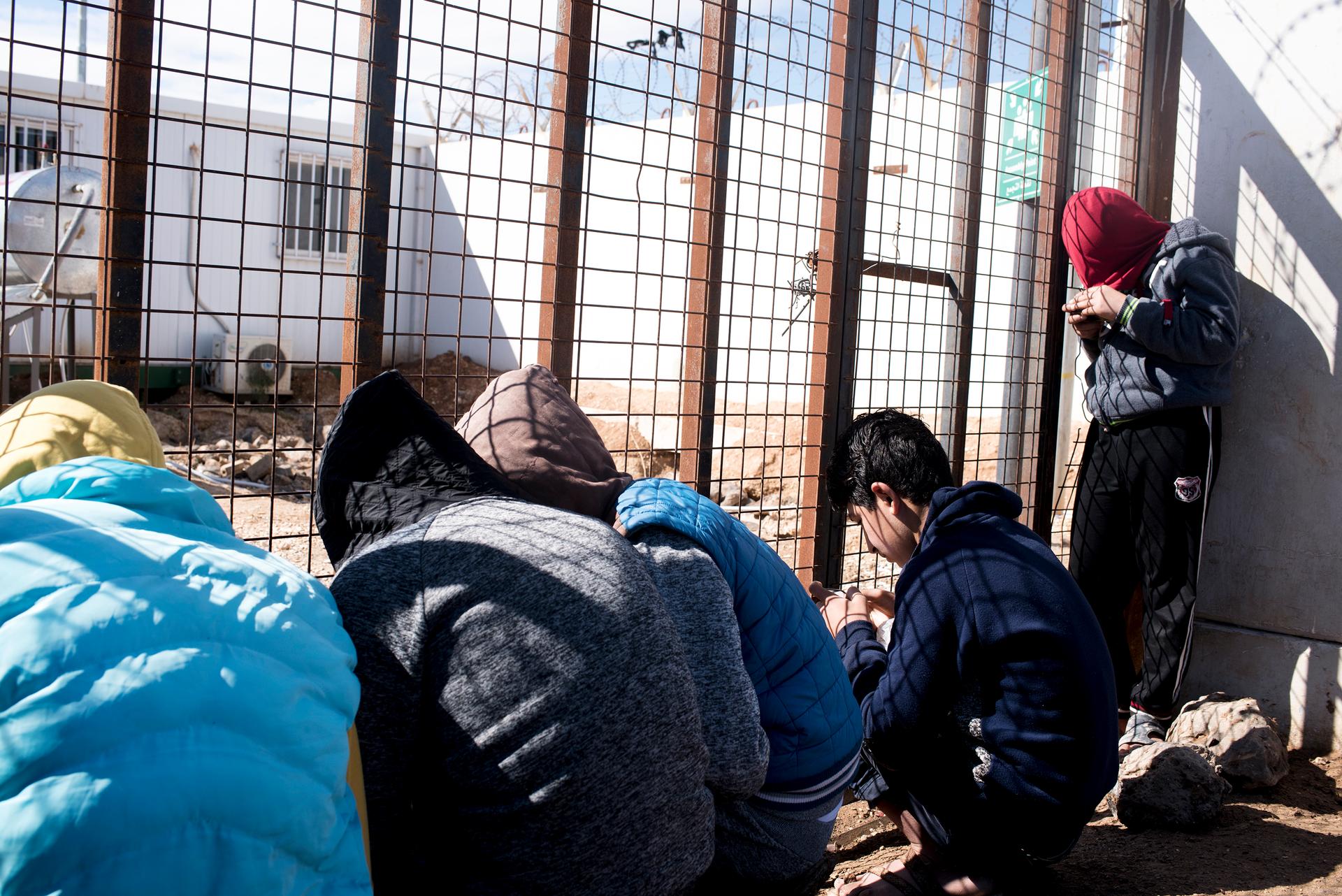
Groups of teenagers are hunched near a fence along the main road. The fences separate the camp from the NGO offices.
My first thought is that they're hiding something. Drugs, maybe?
But it turns out they’re trying to get as close as possible to the only source of Wi-Fi in the camp. And they’re hunched over because it’s cold and windy.
“They’re playing a video game,” explains Mahmouda Abudalo, senior field assistant for the United Nations refugee agency, UNHCR, at Zaatari. “Clash of Clans.”
To be fair, they also make calls to family back in Syria to check in on them. And they try to stay up to date about what’s going on in their home country.
Up the road from the cellphone shop is another store. Big, poofy ball gowns are on display in the window. They’re red, yellow, blue, with sequins and all.
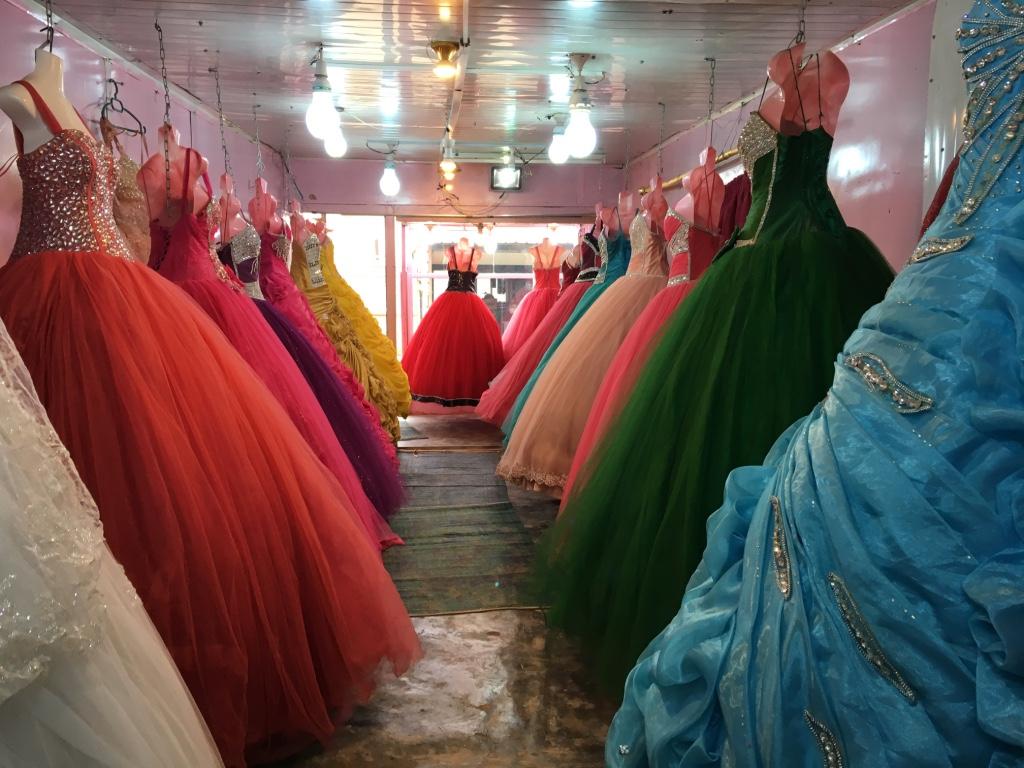
Um Mohammad owns the store. She says she rents the dresses out for weddings. She buys them from Amman, an hour and a half away.
She has turned this trailer into a one-stop glamour boutique. She was a hairdresser back in Syria, and so when she opened the shop a year and a half ago, she added a hair salon in the back.
“You can get anything done here,” she says, beaming. “Highlights, bridal up-dos, blowouts.”
Um Mohammed had to sell a gold ring and a bracelet to get her business off the ground.
But she says she doesn’t mind. “I have a job, no? I’m happy I’m making a living.”
Mahmoud Abudalo and I stop by one of the restaurants in the camp. We order chicken wraps. A couple of minutes later, a young boy places a dish on our white plastic table.
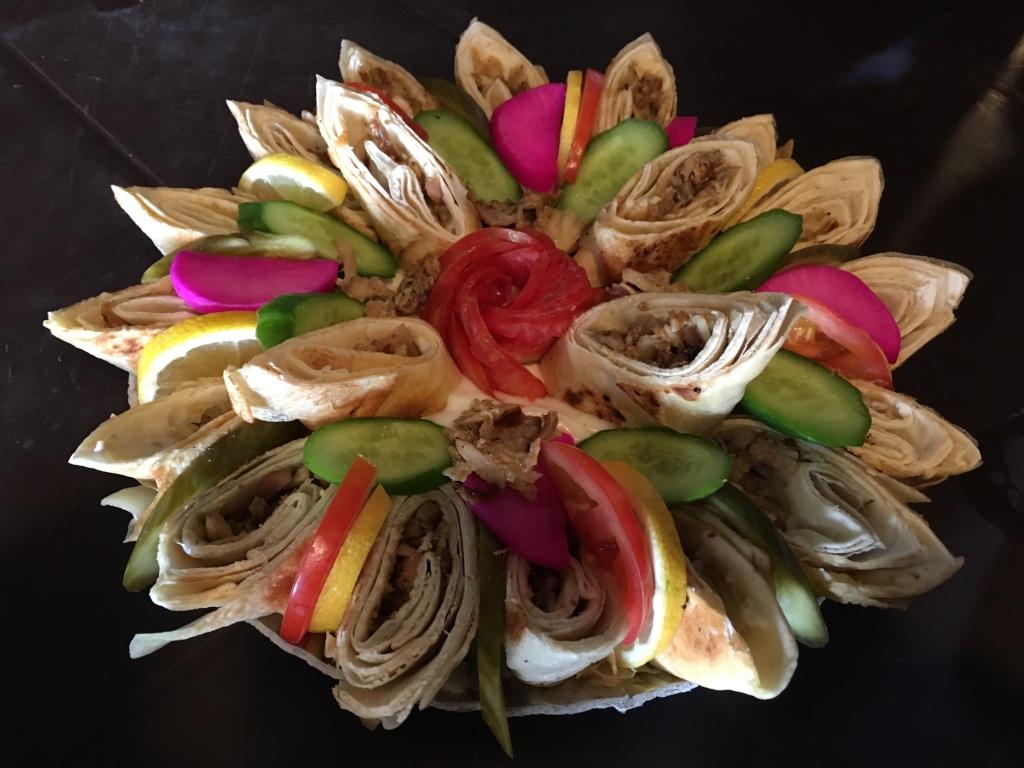
Forget all the images of chicken wraps you have in your mind for a second. This is a work of art. The wraps are sliced diagonally into small pieces. Nestled in between them are pickled beets, tomatoes and lemon wedges.
“Syrians make great food,” Abudalo says.
Abudalo has been at the camp since its early days. He has watched it grow from a couple of tents, hastily erected in 2012, to the huge city it has become today.
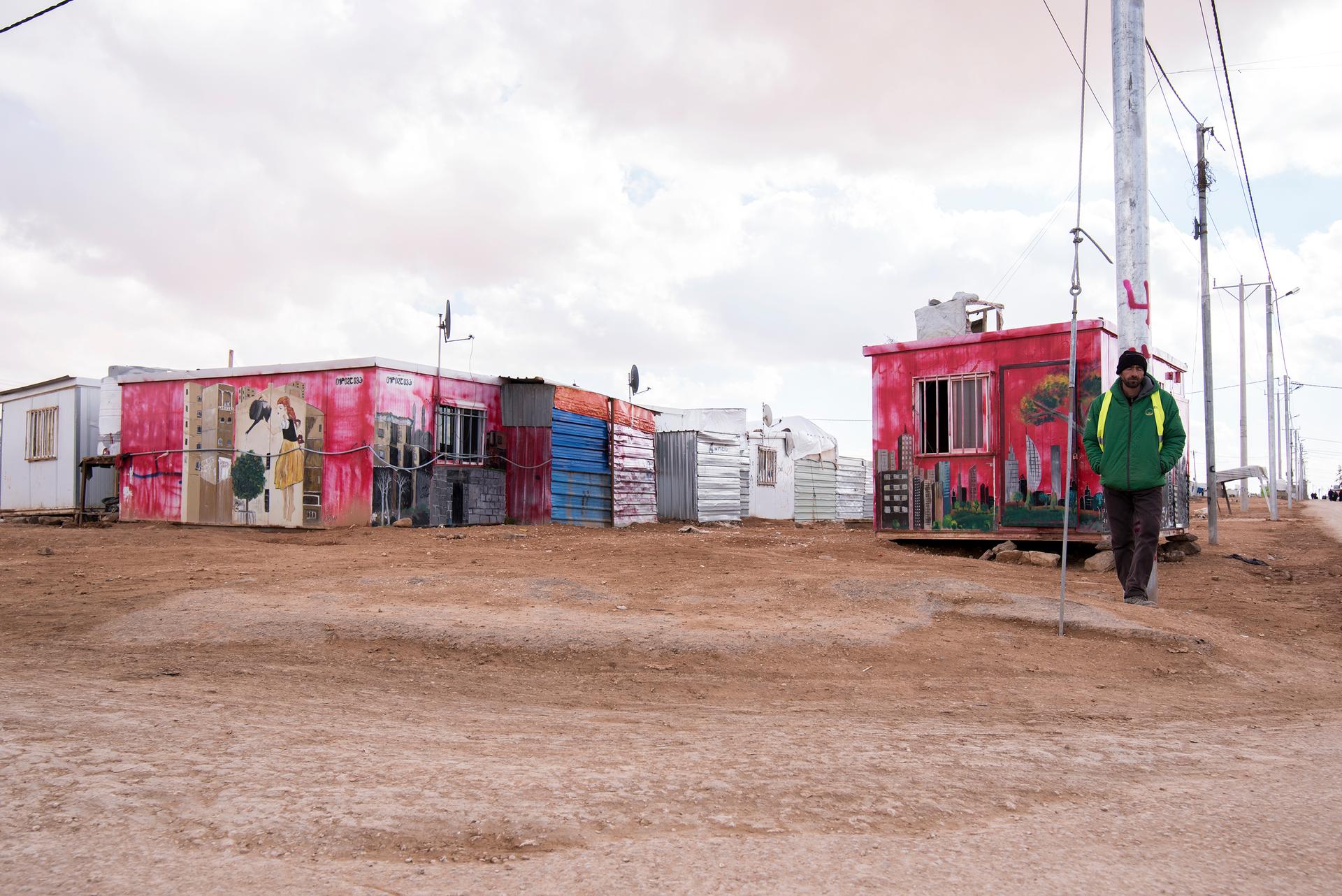
“If you are comparing 2012 [to] our time now it’s too different. Because the camp started with no infrastructure, there was nothing at all. No electricity, no water. It was communal drinking water, communal toilet.”
The most fascinating thing to watch, he continues, is all the businesses that have sprung up.
I ask him how all the goods get to Zaatari. "Officially, by coordinating with the camp management,” he explains.
Store owners can get permission to leave the camp for a short time and get the material they need. Or they can coordinate with people outside and they will deliver the goods.
But not everything comes from outside.
Abu Mohammad is digging up earth in a small patch next to his trailer. By day, he’s a guard for one of the NGOs. In his spare time, he farms.
He proudly shows his healthy looking cauliflower. Then goes on to his cilantro, radishes and onions.
Remember, this used to be a desert. The UN refugee agency had to truck in small rocks to bed down the desert.
"How hard was it to grow these here?" I ask.
“I experimented with different crops to find out which one works better,” he says. He was a farmer back in Syria, so the challenge wasn’t completely new to him.
As we talk, he grabs a bunch of cilantro and pulls the stems out of the ground. He extends his hand toward me.
“Here, eat!”
My heart melts. Middle Eastern hospitality in a refugee camp.
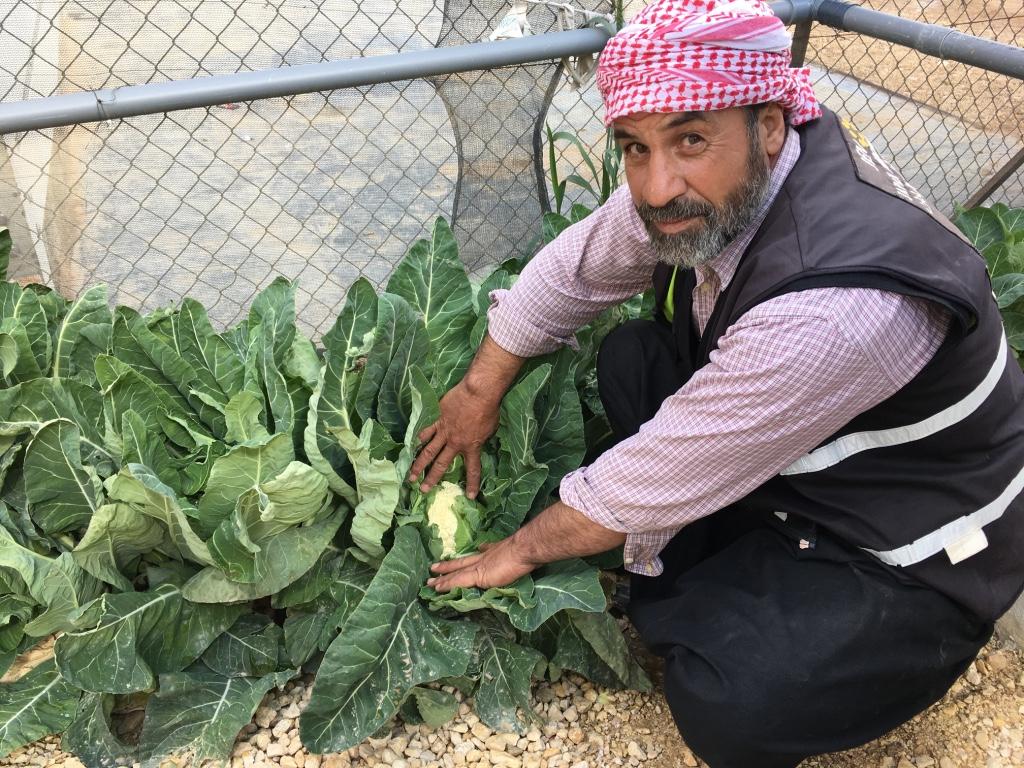
Jordan has a history of taking in refugees. The first wave of Palestinians arrived in 1948 after the Arab-Israeli War. More came after the Six-Day War in 1967. Then, as a result of the Gulf crisis and Iraq’s invasion of Kuwait, the third wave of Palestinians entered Jordan in 1991. A steady stream of refugees from Iraq started to pour into Jordan in 2004. That was followed by the most recent wave of refugees from Syria.
Read more: During WWII, European refugees fled to Syria. Here's what the camps were like.
Some of the camps that were closer to cities like Amman have turned into proper neighborhoods, effectively becoming part of the city sprawl.
Is that the future of Zaatari? The closest city to the camp is Zaatri is Al-Mafraq, which is about a 20-minute drive.
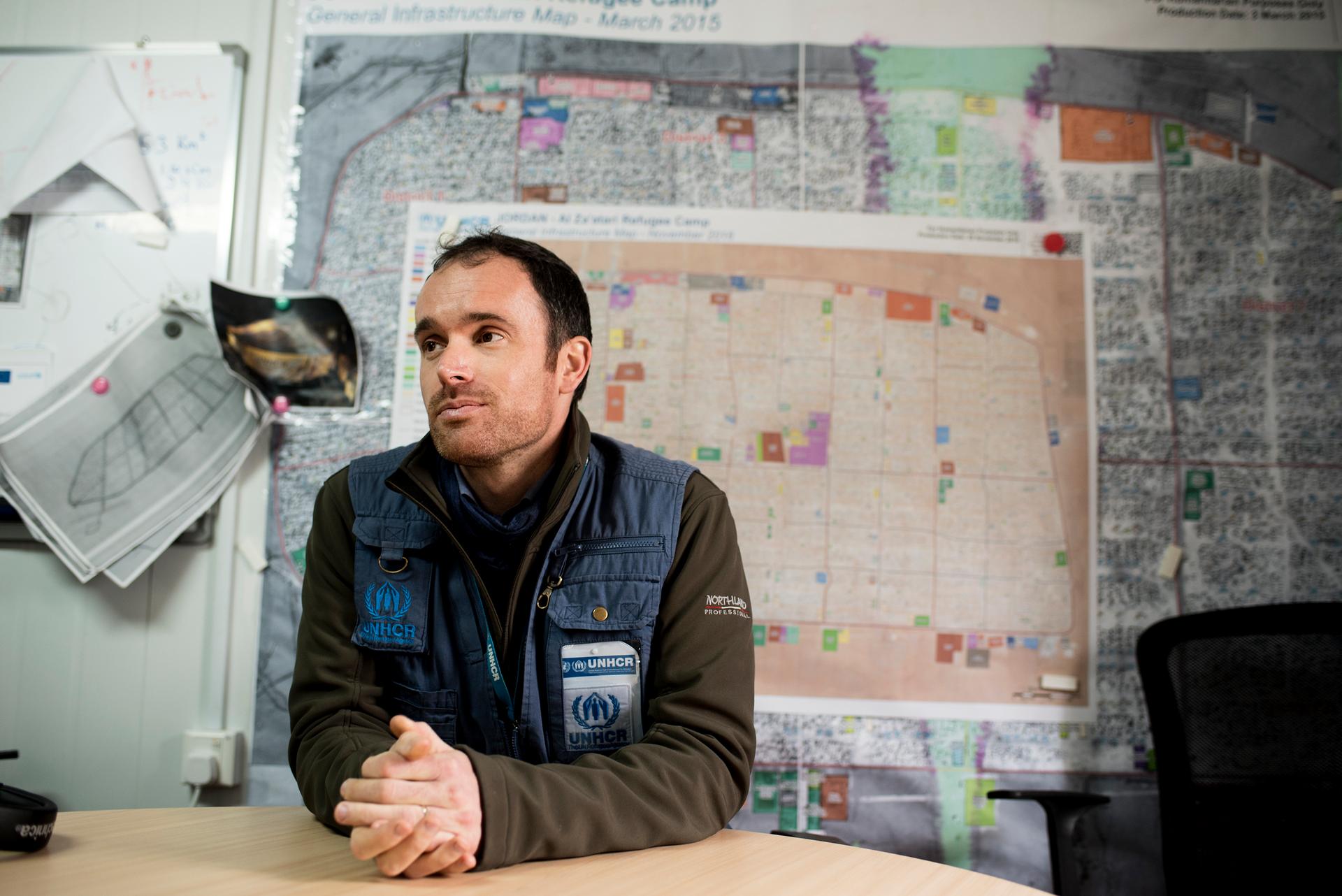
"Certainly one would imagine that in some form, Zaatari will remain,” says Gavin David White, a spokesman for UNHCR.
"But we hope as soon as possible it ceases to be a refugee camp.”
White adds that in the beginning, Syrians came to Jordan with the sense that they’d only be here for a few months. But as the security situation in Syria got worse, they were unable to go back.
Almost five years on, things are much more comfortable in Zaatari. You can find fresh fruits and vegetables, meat and wedding gowns.
But one thing is for sure. It’s not yet home.
We want to hear your feedback so we can keep improving our website, theworld.org. Please fill out this quick survey and let us know your thoughts (your answers will be anonymous). Thanks for your time!
